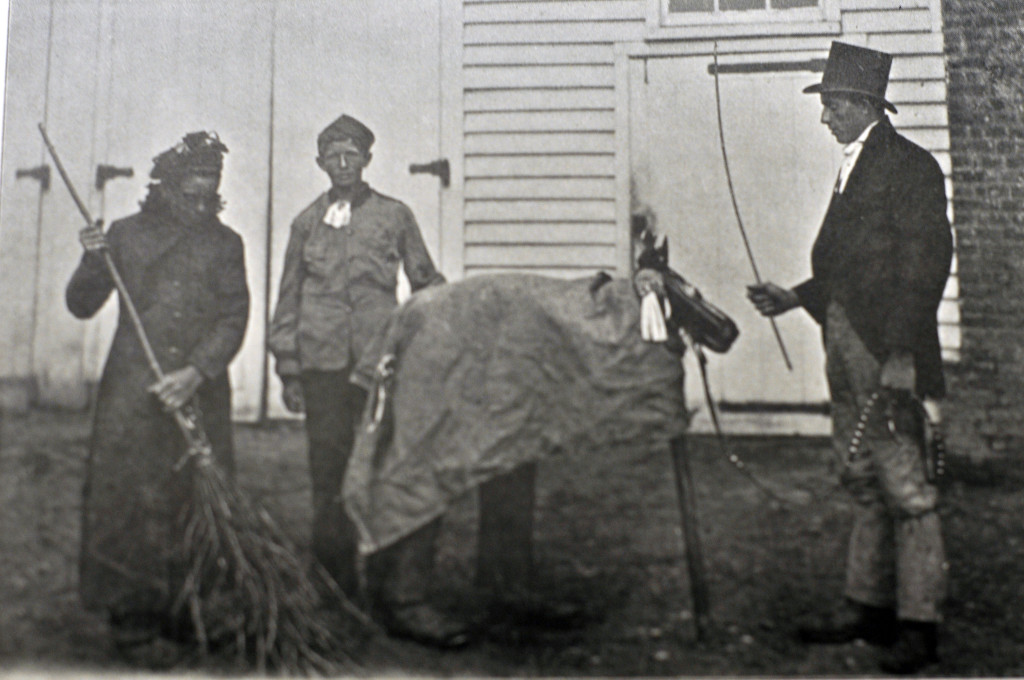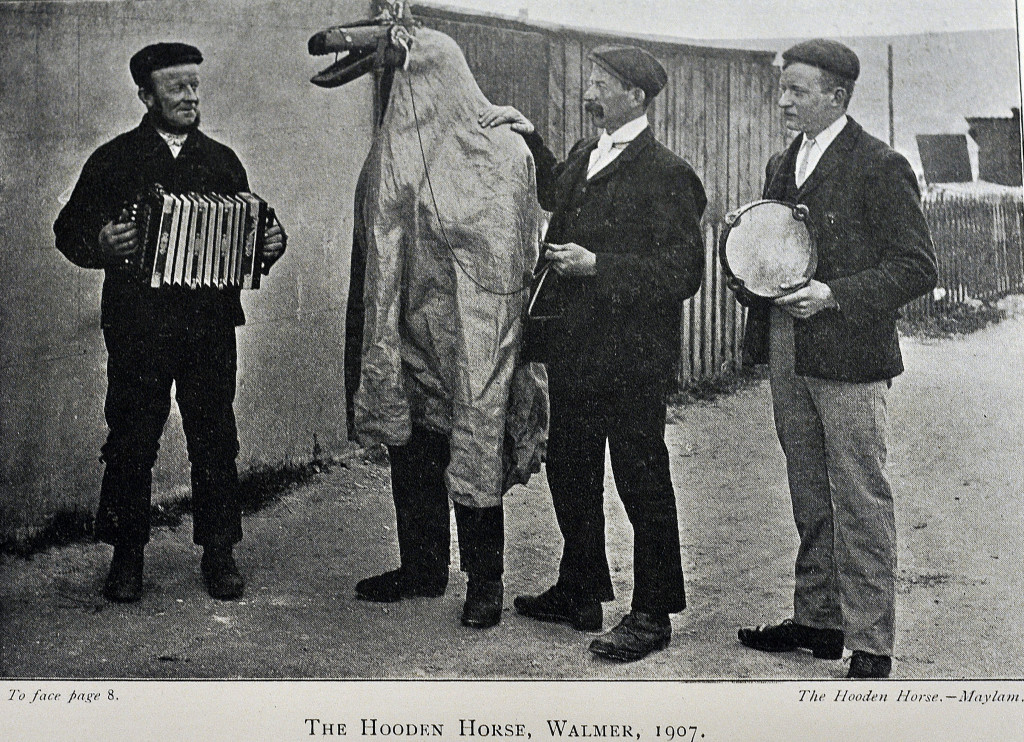With Christmas fast approaching, the IHR Library team have been delving into the collection holdings for a suitably festive insight into the history and traditions of Christmas. Thus, we uncovered The Hooden Horse: an East Kent Christmas Tradition, written by Percy Maylam and published in 1909. The Library contains one of only 303 copies of the book to be printed and so we are delighted to share the story of a rather unusual Christmas pastime.
In the text, the ‘hooden horse’ custom is described in vivid detail and worth repeating verbatim at length: “When seated round the fire, one hears the banging of gates and trampling of feet on the gravel paths outside (or, if the weather be seasonable, the more cheerful crunching of crisp snow), and the sound of loud clapping. Everyone springs up, saying, “The hoodeners have come, let us go and see the fun.” The front door is flung open, and there they all are outside, the ‘Waggoner’ cracking his whip and leading the Horse (the man who plays this part is called the ‘Hoodener’), which assumes a most restive manner, champing his teeth, and rearing and plunging, and doing his best to unseat the ‘Rider’, who tries to mount him, while the ‘Waggoner’ shouts “whoa!” and snatches at the bridle.
‘Mollie’ is there also! She is a lad dressed up in woman’s clothes and vigorously sweeps the ground behind the horse with a birch broom. There are generally two or three other performers besides, who play the concertina, tambourine or instruments of that kind. This performance goes on for some time, and such of the spectators as wish to do so, try to mount and ride the horse, but with poor success. All sorts of antics take place, Mollie has been known to stand on her head, exhibiting nothing more alarming in the way of lingerie than a pair of hobnail boots with the appropriate setting of corduroy trousers.”
“In a house which possesses a large hall, the performers are often invited inside, at times the horse uses little ceremony, and opening the door, walks in uninvited. In the bright light indoors, the performance, though the cause of much amusement, is deprived of all the illusions, the crude make-up of the horse is glaringly apparent and we recognise the performers plainly, as the Bill or Tom of everyday life, who look after the horses.” The ‘horse’ it is noted, was crudely carved from a block of wood then painted and a head fixed to the end of a ‘stout wooden staff about four feet in length.’
In addition, reception of the custom in towns across Kent is recorded within the text. Maylam remarks that in Walmer, ‘I found the practice was that the ‘gratuity’ had to be placed in the horse’s jaws, and on this particular occasion the horse put his head on the counter of the bar while the landlord’s little daughter was lifted up from the other side in order to carry out the proper form of giving the money, after conquering her fright.’
Elsewhere however, he states that reception to the ‘hooden horse’ was not always friendly, even with Christmas a time of goodwill! He regales the story of how, ‘the horse gambolled into all the crowded shops, and everyone was pleased except a collie dog which worked himself into a fearful rage but feared to try his teeth against the wooden jaws of the horse.’
The earliest description of the custom appears to date to a letter to the editor of the European Magazine from May 1807, of which the IHR also has holdings. The first original description from local newspapers, however, dates from 1864 when the Thanet Advertiser printed a description of the custom among the festivities for Christmas that were held in the town that year.
The article provides a reminder that whilst some customs of Christmas, such as that of the ‘hooden horse’ may be confined to history, others still bear remarkable resonance today! The article comments that,
“The great festival of Christmas has been kept here as heretofore. On Christmas Eve we had the merry old Church bells pealing forth the glad tidings. The band enlivened the streets; hooded horses not hooded quite up to the old style, perambulated the streets, and the carol singers, some in tune and others out of tune, were very numerous.”
Merry Christmas and a Happy New Year!!



